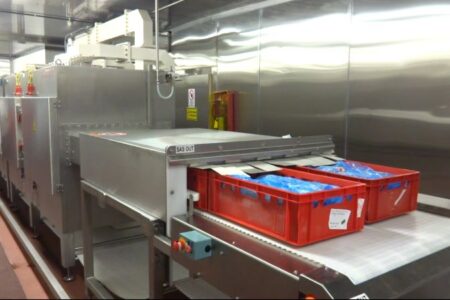Environmental permits – are you prepared for the changes?

The new Industrial Emissions Directive (IED) means that food and drink producers will need to address environmental permits – many for the first time. Air Quality and Odour Specialist, Gary Wilson, from SLR Consulting, considers the implications the new regulations could have and how food and drink businesses can prepare.
Changes to the description of some activities and thresholds, previously covered by the Integrated Pollution Prevention and Control (IPPC) Directive, will mean that some existing installations not currently regulated under IPPC will now need to comply with the IED.
The biggest change comes from installations becoming regulated according to their theoretical capacity levels, rather than their actual production levels, as was the case under the previous legislation. Consequently, the number of sites which will now have to comply with environmental regulation will significantly increase.
Implications
For many, these changes will mean instigating environmental impact assessments of their site against the stringent UK requirements – possibly for the first time. It is important to remember that, while many such installations may have been operating for years, these environmental assessments will need to be implemented in line with the legislation. Failure to carry out an effective assessment could leave operators without a permit and falling foul of the new regulations, potentially resulting in enforced changes to how a site operates and/or the possibility of fines.
The environmental impacts associated with food and drink manufacturing include odour from various process/material handling vents, emissions to air from chimneys (i.e. from the site boiler plant), noise and vibration (e.g. noise from chillers/refrigeration units) and discharges of effluent.
Odour
The potential environmental impacts of most relevance are emissions of odour.
As part of the permitting application, operators will have to demonstrate that the site is free from offensive odour at the site boundary. Sources of odour could include fryers, roasters, ovens, animal processing and disposal as well as effluent treatment.
Previously, operators may have only been concerned about odour if complaints were received from the local authority. Under the new regulations, tighter controls on odour could require operators to comply with the boundary conditions, regardless of how pleasing the odour may be.
There are two main ways to determine if installations are likely to exceed odour limits at the site boundary and therefore whether a permit is likely to be granted. These include:
· measuring the site boundary odour concentrations; or
· predictive modelling to estimate the odour levels at the site boundary.
The assessment of odours is not always straightforward. At many installations there can be multiple odour sources, releasing different types of odours, pleasant and unpleasant, many of which are diurnal or even seasonal. For sites that require a new permit it is important to consider the implications as soon as possible – this is particularly important for sites with seasonal production if odour monitoring is required.
Timescales
Although, the deadline for the operators to hold an Environmental or PPC Permit is 7 July 2015, different regulators have stipulated alternative permit application deadlines:
· In Scotland the deadline has already passed (7 April 2014). If you have missed this deadline, please contact SEPA immediately to minimise the possibility of enforcement action being taken.
· In Northern Ireland, the deadline is the end of 2014, but operators should open negotiation with the NIEA to discuss their requirements in detail.
· In England and Wales the regulators (EA and NRW) should receive applications before the end of March 2015.
Applying for an Environmental Permit or PPC Permit can be a time-consuming and challenging task, involving the collation of large amounts of process data. Since the application process may take some time, initial investigations should be started significantly before the application deadline.
Engaging with specialist odour or other environmental consultancies at an early stage is recommended so that individual food and drink manufacturers can start considering the environmental implications of the IED. This early engagement, especially if monitoring is needed, will result in more methodical assessments, and also allow for effective consultation with the regulators. These measures will help to enhance the likelihood of individual food and drink manufacturers complying with the IED.



